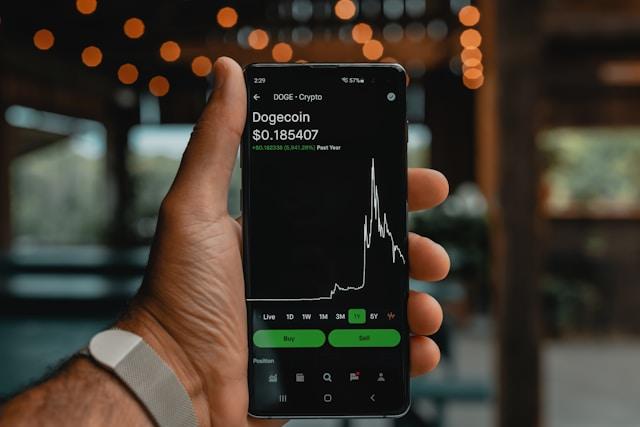
What once required hours of manual analysis and gut instinct now benefits from sophisticated artificial intelligence systems that can process millions of data points in seconds. As someone who's been following these developments closely, I've watched this evolution reshape how both institutional and retail traders approach the markets.
The Rise of AI in Financial Markets
When I first started paying attention to financial markets, trading floors were packed with shouting brokers and ringing phones. Today, those same floors are often eerily quiet, filled instead with the hum of servers running complex algorithms. This shift didn't happen overnight, but it's accelerated dramatically in recent years.
Understanding the AI Trading Revolution
The integration of artificial intelligence into trading isn't just about speed it's about intelligence. Modern AI systems can identify patterns that human traders might miss, analyze sentiment from thousands of news sources simultaneously, and adjust strategies in real-time based on market conditions.
What makes this particularly fascinating is how accessible these technologies have become. Just a few years ago, AI-powered trading tools were the exclusive domain of hedge funds and investment banks with multi-million dollar technology budgets. Now, innovative platforms are democratizing access to these powerful tools.
How AI Trading Systems Actually Work
Let's break down what happens behind the scenes when AI meets trading. At its core, AI trading involves three main components: data collection, analysis, and execution.
Data Collection and Processing
Modern trading AI systems are voracious consumers of data. They pull information from:
- Real-time market prices across multiple exchanges
- Economic indicators and government reports
- News articles and social media sentiment
- Historical trading patterns
- Weather data (for commodity trading)
- Satellite imagery (for supply chain analysis)
The sheer volume of data would overwhelm any human trader, but AI systems thrive on it. They can process and contextualize information from thousands of sources simultaneously, creating a comprehensive market picture that would be impossible to achieve manually.
Pattern Recognition and Analysis
This is where AI truly shines. Machine learning algorithms can identify subtle patterns and correlations that might indicate upcoming market movements. For instance, they might notice that whenever certain economic indicators align with specific social media sentiment patterns, a particular sector tends to move in a predictable way.
What's particularly interesting about modern systems like Grok 3 AI Italy is their ability to learn and adapt. Unlike traditional algorithmic trading systems that follow pre-programmed rules, AI systems can evolve their strategies based on market performance.
Execution and Risk Management
Once an AI system identifies a trading opportunity, execution becomes critical. AI trading platforms can execute trades in milliseconds, far faster than any human could click a button. But speed isn't everything – these systems also incorporate sophisticated risk management protocols.
They continuously monitor positions, market conditions, and portfolio exposure, adjusting strategies to maintain predetermined risk levels. This dynamic approach to risk management has proven particularly valuable during volatile market periods.
The Benefits of AI-Powered Trading
Having observed the evolution of trading technology, I've seen firsthand how AI systems offer several compelling advantages over traditional trading methods.
Emotion-Free Decision Making
One of the biggest challenges in trading is managing emotions. Fear and greed can cloud judgment, leading to poor decisions. AI systems don't experience these emotions – they stick to their analytical framework regardless of market conditions. This consistency can be particularly valuable during market turbulence when human traders might panic or become overly aggressive.
24/7 Market Monitoring
Global markets never sleep, and neither do AI trading systems. While human traders need rest, AI systems can monitor markets continuously, identifying opportunities across different time zones and asset classes. This round-the-clock vigilance ensures that no opportunity is missed due to human limitations.
Backtesting and Strategy Optimization
AI systems can test trading strategies against historical data, running thousands of simulations to identify optimal parameters. This backtesting capability allows traders to refine their approaches before risking real capital. The platform at grokaitrading.com exemplifies how modern systems make this sophisticated analysis accessible to individual traders.
Real-World Applications and Success Stories
The impact of AI on trading isn't theoretical – it's producing real results across various market segments.
Institutional Trading
Major investment banks and hedge funds have been early adopters of AI trading technology. Renaissance Technologies, one of the most successful hedge funds in history, has relied heavily on mathematical and AI-driven models for decades. Their Medallion Fund has achieved returns that seem almost impossible by traditional standards.
Retail Trading Revolution
What's more exciting is how AI is leveling the playing field for individual traders. Platforms that once cost millions are now available to retail traders at a fraction of the price. This democratization means that sophisticated trading strategies are no longer the exclusive domain of Wall Street.
Cryptocurrency Markets
The volatile and 24/7 nature of cryptocurrency markets makes them particularly well-suited for AI trading. AI systems can navigate the rapid price movements and identify arbitrage opportunities across multiple exchanges simultaneously.
Common Misconceptions About AI Trading
Despite its growing popularity, there are still many misconceptions about AI trading that need addressing.
AI Trading is a Get-Rich-Quick Scheme
This is perhaps the most dangerous misconception. While AI systems can improve trading performance, they're not magic money machines. Successful AI trading still requires understanding market fundamentals, proper risk management, and realistic expectations.
AI Will Replace All Human Traders
While AI is transforming trading, human judgment remains valuable. The best trading operations often combine AI analysis with human oversight and strategic decision-making. AI excels at processing data and identifying patterns, but humans still play crucial roles in strategy development and handling unprecedented market events.
AI Trading is Only for Tech Experts
Modern AI trading platforms have become increasingly user-friendly. You don't need a computer science degree to leverage these tools – many platforms offer intuitive interfaces that make AI-powered analysis accessible to traders of all technical backgrounds.
Choosing the Right AI Trading Platform
With numerous AI trading platforms available, selecting the right one can be challenging. Here are key factors to consider:
Transparency and Track Record
Look for platforms that provide clear information about their methodologies and historical performance. Transparency is crucial – you should understand how the AI makes decisions, even if you don't grasp every technical detail.
Risk Management Features
Robust risk management should be non-negotiable. The platform should offer features like stop-losses, position sizing controls, and portfolio diversification tools.
Educational Resources
The best platforms don't just provide tools – they help users understand how to use them effectively. Look for platforms offering educational content, tutorials, and ongoing support.
Regulatory Compliance
Ensure any platform you consider operates within regulatory frameworks. This provides important protections and indicates a commitment to legitimate business practices.
The Future of AI in Trading
As we look ahead, the role of AI in trading will only expand. Several trends are worth watching:
Natural Language Processing Advances
AI systems are becoming better at understanding and analyzing human language. This means they can extract insights from news articles, earnings calls, and social media with increasing sophistication.
Quantum Computing Integration
While still in early stages, quantum computing could revolutionize AI trading by enabling even more complex calculations and pattern recognition.
Personalized Trading Strategies
AI systems are beginning to tailor strategies to individual trader preferences and risk tolerances, creating truly personalized trading experiences.
Practical Tips for Getting Started with AI Trading
If you're interested in exploring AI trading, here's how to begin:
Start with Education
Before jumping into AI trading, invest time in understanding both traditional trading principles and how AI enhances them. Many platforms offer demo accounts where you can practice without risking real money.
Define Your Goals and Risk Tolerance
AI trading isn't one-size-fits-all. Be clear about your financial goals, time horizon, and risk tolerance. This clarity will help you choose appropriate AI tools and strategies.
Begin Small
Even with AI assistance, start with small positions as you learn. This allows you to understand how the systems work and how markets respond without risking significant capital.
Monitor and Adjust
While AI systems can operate autonomously, regular monitoring remains important. Review performance, understand why certain trades were made, and adjust parameters as needed.
Conclusion
The integration of AI into trading represents one of the most significant technological shifts in financial markets history. It's democratizing access to sophisticated analysis tools, enabling more informed decision-making, and creating new opportunities for traders at all levels.
However, it's important to approach AI trading with realistic expectations. These systems are powerful tools, but they're not guaranteed profit machines. Success still requires education, discipline, and proper risk management.
As AI technology continues to evolve, we can expect even more innovative applications in trading. The key is to stay informed, choose reputable platforms, and remember that AI is meant to enhance human decision-making, not replace it entirely.
Whether you're a seasoned trader looking to enhance your strategies or a newcomer curious about the possibilities, AI trading platforms offer exciting opportunities. The future of trading is here, and it's more accessible than ever before.


